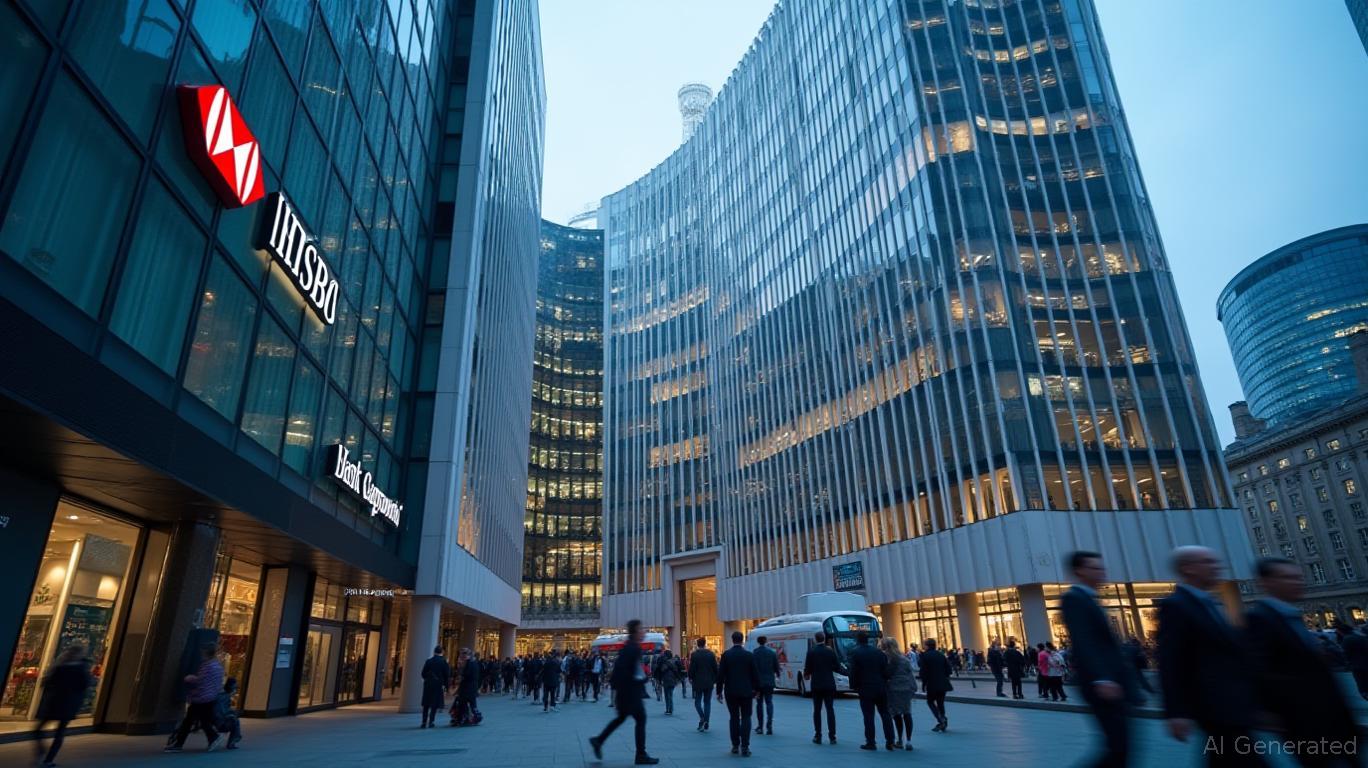Unlocking £175B: HSBC's Regulatory Push and the UK Banking Crossroads
The UK banking sector stands at a pivotal juncture. A proposal to relax ring-fencing rules—post-2008 crisis regulations that mandate a strict separation between retail and investment banking activities—could unleash a wave of capital efficiency and growth opportunities for major lenders. For
, NatWest, and Lloyds, the potential to tap into an estimated £175 billion in retail deposits currently locked in ring-fenced entities represents a transformative catalyst. Yet Barclays' vocal opposition highlights the tension between growth and systemic risk. With the Labour government's growth agenda pressuring the Bank of England (BOE), investors must weigh whether this regulatory shift will unlock value—or expose vulnerabilities.
The £175B Opportunity: Capital Efficiency Meets Regulatory Arbitrage
The ring-fencing regime, enshrined in the 2013 Financial Services Act, requires banks with over £25 billion in UK retail deposits to isolate their high-street activities from riskier investment operations. For HSBC, this meant creating HSBC UK as a separate legal entity, a costly exercise that now restricts the use of £1.2 trillion in core deposits for investment banking. The proposed reforms aim to raise the ring-fencing threshold to £35 billion and introduce exemptions for smaller banks, but the real prize lies in allowing major lenders to use up to £35 billion each of their retail deposits for investment activities.
For five UK banks (HSBC, NatWest, Lloyds, Santander UK, and Barclays), this could free £175 billion in deposits—a pool of capital that could fuel lending, M&A, or fee-based services. The logic is straightforward: U.S. rivals like JPMorgan and Goldman Sachs face no such restrictions, giving them an edge in cross-selling and capital allocation. As one analyst noted, “This is about level playing fields—or at least, reducing the cost of compliance that's holding UK banks back.”
Barclays' Stance: Stability vs. Growth
While HSBC and its peers see this as a lifeline, Barclays has emerged as a vocal skeptic. The bank argues that weakening ring-fencing could undermine financial stability, particularly after the 2008 crisis exposed interconnected risks. Barclays' CEO, Juan Segovia, has emphasized that “ring-fencing is a firewall, not a barrier,” and that diluting it risks reintroducing the “too big to fail” dynamic.
The BOE's dilemma is clear: How to balance the Labour government's push for economic growth—through lower bank compliance costs and higher lending—with the need to prevent another crisis? The Bank's recent review of ring-fencing governance (January 2024) hinted at flexibility, suggesting waivers for administrative burdens but stopping short of major changes. Yet with pressure mounting from regulators and the government, a phased relaxation seems increasingly likely.
Why Investors Should Pay Attention Now
The regulatory debate is a sector-wide catalyst, with implications for both valuation and consolidation. Banks like HSBC and NatWest, which have long lobbied for change, could see ROE (return on equity) improvements of 5-10% if deposits are freed for higher-margin activities. Meanwhile, Barclays' resistance could pressure its stock if peers capitalize on the reforms first.
For investors, the key is timing:
1. Policy Outcomes: Monitor the BOE's final decision on ring-fencing reforms, expected by mid-2025. A “yes” vote could trigger a 10-15% rally in HSBC and NatWest shares.
2. Valuation Gaps: HSBC trades at a 40% discount to its pre-pandemic valuation, while Barclays' stock has lagged peers due to its conservative stance.
3. Consolidation Risks: Smaller banks or fintechs may exploit relaxed rules to challenge incumbents, creating M&A opportunities—or threats.
The Bottom Line: Risk-Adjusted Growth or Regulatory Whiplash?
The ring-fencing debate isn't just about compliance costs—it's a referendum on whether UK banks can compete globally without sacrificing safety. For growth-oriented investors, HSBC and NatWest offer asymmetric upside if reforms proceed. But Barclays' caution underscores the risks: A return to interconnected banking could amplify systemic exposure, particularly in a recession.
The Labour government's push for growth tilts the scales toward reform, making this a now-or-never moment for investors. Those who bet on regulatory change—and the £175B capital release it promises—could reap rewards. But those who ignore Barclays' warnings may find themselves on the wrong side of the next crisis.
Investment Action:
- Buy HSBC (HBC): For exposure to the upside of regulatory change.
- Sell Barclays (BARC): If its risk-averse stance limits capital returns.
- Watch the BOE: A green light on reforms could trigger a sector-wide rerating.
The UK banking sector is at a crossroads. Investors must choose: embrace the growth gamble or hedge against systemic risk. The clock is ticking.
This analysis is for informational purposes only. Consult a financial advisor before making investment decisions.

Comments
No comments yet